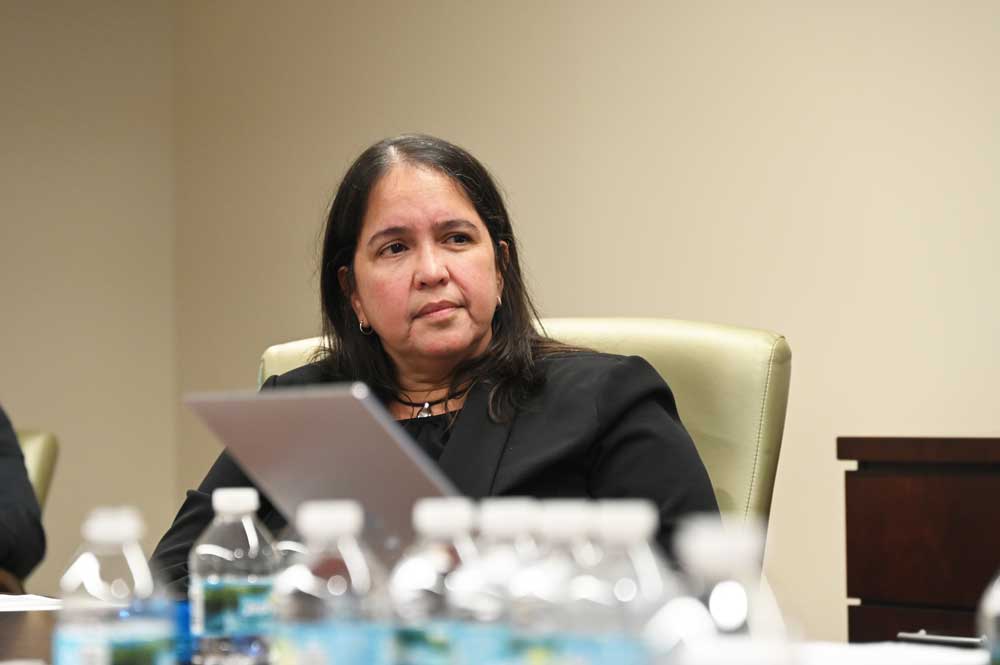
Dr. Wendolyn Sneed was immediately at ease this afternoon, taking control of the room of top cops and doctors and lawyers and such as her predecessor had not managed to do, dazzling them with her experience, dissecting their questions as briskly as if she were cutting up dead bodies–and managing to charm her interrogators to boot.
Not an easy feat, considering the tribunal‘s make-up: State Attorney R.J. Larizza, Public Defender Matt Metz, St. Johns County Sheriff Robert Hardwick, St. Augustine Police Chief Jennifer Michaux, Florida Medical Examiners Commission Chairman Stephen Nelson, Flagler County Commissioner Andy Dance, and a few others with only slightly lesser, unelected titles. The interview, one of two, took place at the St. Johns County administration complex today.
Half an hour in, it was clear she was their choice. The follow-ups had dried up. They were just going through the motions of asking the prepared questions. Barely an hour in, after asking her to wait elsewhere for a short time as they deliberated, their choice was unanimous: Sneed, currently serving as the chief medical examiner in Palm Beach County, is to be the next chief medical examiner for Flagler, St. Johns and Putnam counties, known as District 23 in the state. She will be paid $320,000 a year to start, plus benefits. (See Sneed’s resume below.)
Last summer Chief Medical Examiner Predrag Bulic died unexpectedly of a severe stroke after 12 years on the job. Dr. Jon Thogmartin, a former chief medical examiner in Palm Beach, has been filling in. The panel’s decision today is in theory just a recommendation. It’ll go to the state’s Medical Examiner Commission, which is expected to ratify the decision at a mid-February meeting and send the name on to Gov. Ron DeSantis, who makes the official appointment. But DeSantis hasn’t made a medical examiner appointment in four years, even though all chief medical examiners in non-charter districts serve three-year terms, and must be reappointed.
Larizza, as State Attorney, has the authority to name an interim chief, which in effect will carry the same significance as a permanent appointment: no one is holding their breath for DeSantis, increasingly distracted by politics, to follow through. Pending Sneed’s completing of paperwork, that’s what Larizza will do, he told her.
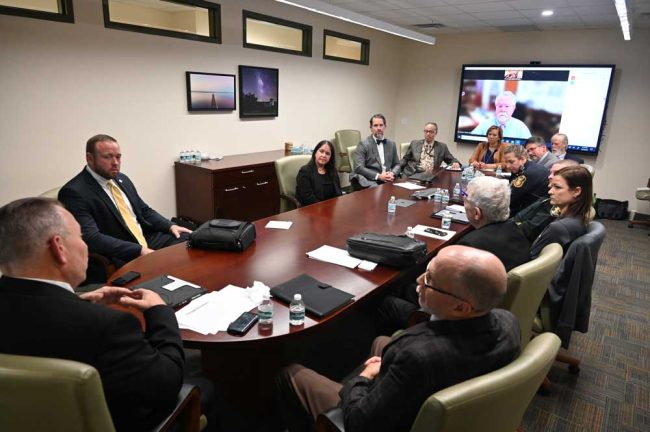
“She genuinely appears to want to be here,” Larizza said. “I mean, hell, she’s already started house-shopping.” She had. Right after her brief introduction at the top of the interview (“Puerto Rican born and raised” were her first words out of the gate, married to a Navy man now retired and with a side gig in real estate, four stepchildren in Vegas, seven step-grandchildren, one four-legged pet), Sneed said she and her husband had been looking at houses.
“And we found one that we really like,” she said.
“Which county?” the sheriff asked her.
“Oh, St Johns.”
“It’s the safest, ma’am,” Hardwick said.
“I see my sales pitch for a residence in Flagler County has become more complicated,” Dance said.
There were a few exchanges like that, but the interview was by no means trivial at any point, rather drilling into some of the job’s more serious technical, legal, ethical and political dimensions. A medical examiner has to know how to contend with some of the most powerful police and legal forces in the counties served–forces that depend on a medical examiner’s determinations for innumerable cases, including homicides, suicides, and car crashes. It makes the job one of the most powerful and influential, if least visible, in the criminal justice system.
Most of the questions were as sharp (and double-) edged as they were revealing of the questioners’ roles.
“In cases where the causes a manner of death are determined certified on the day of examination. Do you consider it good practice to withhold autopsy reports or wait until the toxicology and other tests are completed? No, I think that the toxicology is a tool and so the report needs to be held when the cause of death is secondary or it can be associated to the amount of you know the drugs present in the system. I think if you have a cause of death and the report is finalized, it’s prudent to wait a couple of days go back and review the risk the report but if you have it ready, it should go out and then you can attach the rest of the toxicology and ancillary studies if you have any to it.
“In cases where causes or manner of death are determined certified on the day of examination, do you consider it good practice to withhold autopsy reports or wait until the toxicology and other tests are completed?” the St. Augustine police chief asked. Detectives like the cause of death in the cases they’re working to be determined as rapidly as possible.
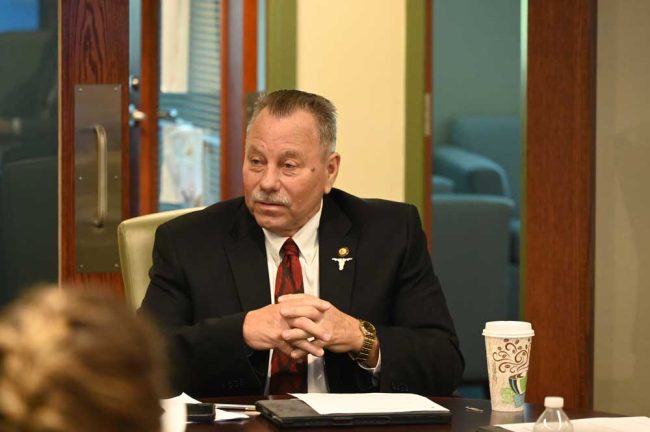
“If you have a cause of death and the report is finalized,” Sneed replied, “it’s prudent to wait a couple of days, go back and review the report, but if you have it ready, it should go out. Then you can attach the rest of the toxicology and ancillary studies, if you have any to it.”
The sheriff got more specific. He said cops rely heavily on autopsy results to get offenders off the streets, making the reports time sensitive. He wanted something ahead of a report: “Are you willing to make that verbal commitment, again, based on your findings at the time, knowing what you’re going to put in report?” he asked.
Sneed was cautious. “It depends on the case,” she said. “If you know that you’re going to call it that, you should call it that–that day. You should not be waiting for anything else if you have a cause of death. But I can see in certain cases where you may be waiting for a little bit of information. Say for example, if you’re trying to determine if there was any action by another towards the person, then you can say: this looks like a homicide, right? And these findings are inconsistent with ones that one could cause to self. Yes, but I’m going to wait for all the information before I make that determination.”
Larizza went further: would she overrule a colleague’s determination? “The answer is no,” Sneed said, rather adamantly. Not after the report has been drafted. All the debates take place in morning and afternoon meetings as the case develops, but once the determination is certified, the debates end. “I will never ask a doctor to change something from a natural to suicide or an accident to homicide if the circumstances are not indicative of such, no.”
She added: “If the question is, would I push someone to write something that they don’t agree with or do not believe in, like a manner of death or a cause of death is inappropriate, and just because I want to call it that? Well, that will never happen, and I will never do that.”
“But if you thought that the manner and cause of death were wrong,” Larizza pressed, “you believed as the chief medical examiner that what they put down, their determinations were scientifically wrong, what would you do?”
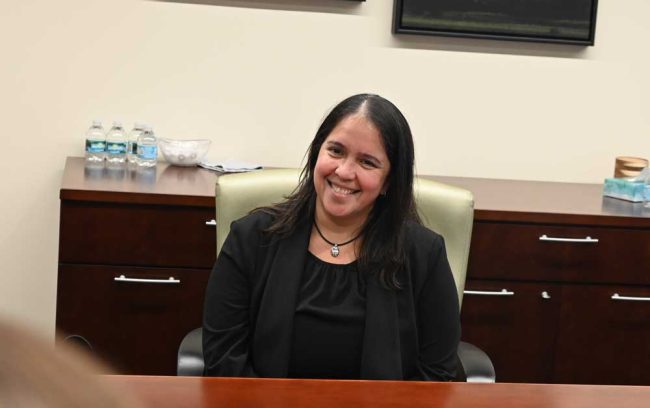
“Then at that point, we will discuss and that person will not be signing that case. It will be me signing,” she said. “If someone was so wrong that they would not have the expertise, education, experience to call something what it is, then yes, if somebody has a gunshot wound to the head and somebody wants to call it, you know, atherosclerotic cardiovascular disease, that’s not going to happen.”
“Well, that’s pretty obvious. But the reason I asked this is because it happened here,” Larizza said, touching on a case without naming those involved, and that became a national controversy: the 2010 death by gunshot of Michelle O’Connell, who was married to a St. Jhons County Sheriff’s deputy, Jeremy Banks, and whose gun was used in the fatality. The death was first ruled a homicide, then changed to suicide. “It was changed by the chief medical examiner, changed the determination from homicide to suicide,” Larizza told Sneed, “and of course, that creates a lot of problems. And as a manager myself, there are times, reluctantly, where I have to tell the prosecutor: This is wrong. This is not going to happen while I’m the elected state attorney. I want to know if you have that–if that is your philosophy as well. He said it didn’t have to be something obvious like the difference between a gunshot and a heart attack. “It could be a close call. That happens now. That’s where the rubber meets the road. I want to know where you stand on something like that.”
Sneed didn’t blink.
“Well, multiple things would happen before this, before the determination,” the pathologist said, “but it will be my determination as the chief and the leader of the office, what will go on that certificate. But before then, if it’s something that it’s in between, I would probably run this by other colleagues that I have that I trust, and I’ve done this in the past. We’ve shared these cases with other people. And there’s always that manner of [cause] undetermined, because if you really can fill in one way or the other, you should not be putting one over the other.”
Sneed had sent a message: she was no dogmatist. She was no push-over, either. Larizza was satisfied. Sneed then parried another question–whether she would file a formal complaint against a colleague if faced with unethical conduct. “It’s a matter of morality at this point,” she said, “rather than scientific talk. I would not bypass or ignore something that I know is wrong, something that may have a negative impact on us, the medical examiner, law enforcement, a case or the judicial system. If that answers your question. I believe that I will be strong enough, even if I’m uncomfortable, to say this is wrong. Take it to the appropriate agency.”
She would later describe herself as “fiercely independent.” By then, it was pretty much redundant: that had been the theme of her interview.
“You have a charm about you and also a professionalism,” Larizza told her at the end of the interview, as close as he came to tipping his hand before the official announcement, which was only a few minutes away anyway. She had also won over Hardwick with her commitment to educating detectives and others, not just providing them reports. She welcomes the attendance of law enforcement at autopsies.
Sneed will start in mid-February.
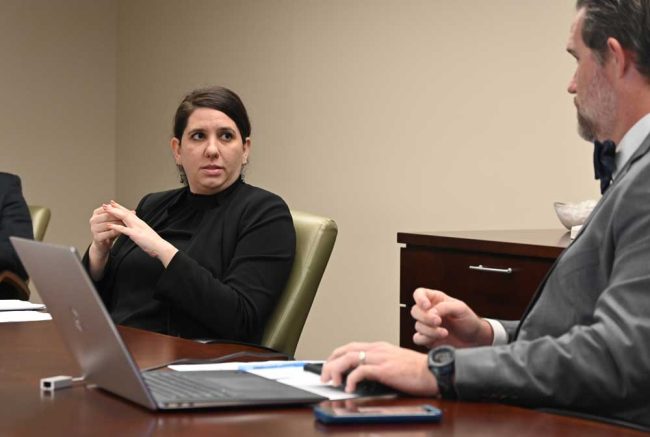
Sneed’s only competitor was Dr. Catherine R. Miller, who had been interviewed earlier in the day, and who happens to be Sneed’s employee in Palm Beach County, where Sneed has been the chief medical examiner since 2020, after coming in second when she sought the job in Volusia. Miller is an assistant medical examiner. She impressed the panel with her poise and intelligence. But she did not charm, and workhorse though she is, she does not have Sneed’s wealth of experience just yet.
After she was offered the job, Sneed described Miller as “an amazing physician, and she will be a chief somewhere, and she’s also going to be great.”
“We have extended this offer to her,” Larizza said. “It is conditional upon completion of the paperwork and the background is in. Once that’s done, whether she gets a gubernatorial appointment or not I have the authority to do the interim appointment, and we’ll do that until further notice.”
![]()





























Just Sayin' says
At the end of the day, even if the state attorney makes a call based in part on the medical examiner’s report, anything can happen. Regardless if an unfortunate event is justified as self defense, apparently in Flagler County ten shots at close range can ironically move a deputy from administrative leave to the car rider line at an elementary school, leaning in and out of parent’s vehicles in the name of “safety.” As a parent, it’s a little unsettling.
https://flaglerlive.com/48245/troy-gordon-shooting/